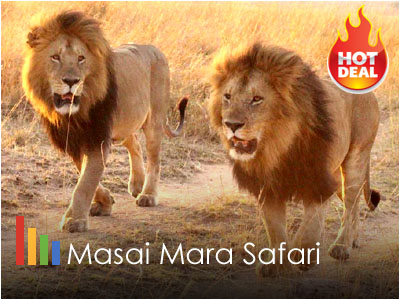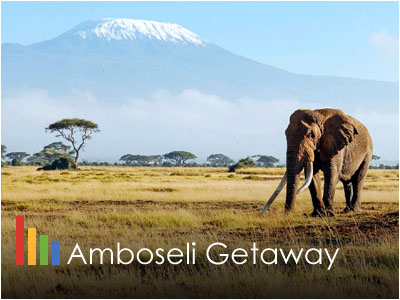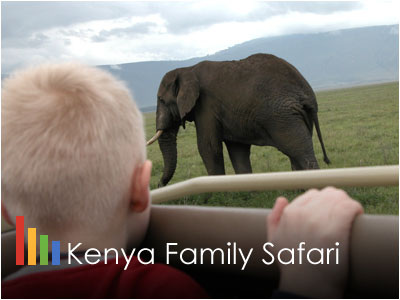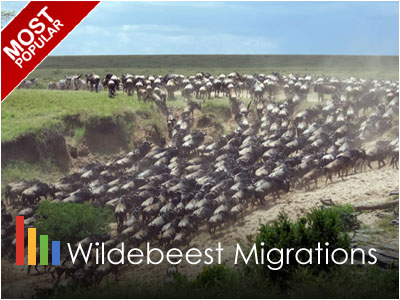Samburu National Reserve, Kenya, Africa
Samburu National Reserve - Kenya, Africa
Samburu National Reserve is situated Samburu County of Kenya, East Africa. It is bordered to the south by Ewaso Nyiro River, which separates it from the Buffalo Springs National Reserve. The reserve covers an area of 165 Km² and is located around 345Km from Nairobi. Samburu National Reserve is rich in wildlife with an abundance of rare northern specialist species such as the Grevy’s zebra, Somali ostrich, reticulated giraffe, gerenuk and the beisa oryx (also referred to as Samburu Special Five). The reserve is also home to elephants and large predators such as the lion, leopard and cheetah. Kamunyak the miracle lioness that adopted the baby oryx was as a resident in the reserve. Wild dog sightings are also a common attraction to this unique protected area. Birdlife is abundant with over 450 species recorded.

Basic Facts - Samburu National Reserve
Samburu National Reserve is situated Samburu County of Kenya. It is bordered to the south by Ewaso Nyiro River, which separates it from the Buffalo Springs National Reserve. The reserve covers an area of 165 Km² and is located around 345Km from Nairobi. The Reserve lies within ecological zone V- which is classified as arid and semi- arid with moisture index of 42 to 57, which indicate that evapo-transpiration is greater than available moisture. The days are extremely hot while the nights are cool. The annual mean temperatures range between 18ºC and 30ºC, while the mean annual rainfall is 354mm with peaks in November and April. The dry season starts in late May, and goes up to early October during when large concentration of wildlife is found in the reserve due to availability of lush vegetation along the Ewaso Nyiro River, the main source of water to the Reserve and the nearby communities.
More About Samburu National Reserve
Samburu National Reserve is located 345 kms north of Nairobi in the hot and arid northern region of Kenya. The reserve is placed within the ancestral lands of the Samburu, who are close relatives of the Maasai. Despite being so far flung, the reserve harbours a number of species rarely found anywhere else. Among these are Grevy's zebra, the reticulated giraffe and the beisa oryx, all of which are only found north of the equator. For most of the year Samburu is under the unsympathetic glare of the equitorial sun. The reserve's thirst is quenched by the wide swathe of the Ewaso Ngiro river which rises hundreds of kilometres away in the Aberdares only to vanish beyond Samburu in the recesses of the Lorian swamp.
Samburu National Reserve is not very well-known, but is definitely worth a visit since it has no mass visitors. It is situated on the banks of the Ewaso Nyiro river in Kenya. This means plenty of water, trees and shade to attract wildlife like elephant, lion, giraffe and zebra from the surrounding savannah plains. Leopards are also regularly spotted. The river has a large population of crocodiles which can be seen at virtually every bend on the river's sandbanks. At its lower reaches, where permanent pools have formed, hippos are a common sight. Elephants roam the gaunt hills which punctuate the scrubland. These elephants seek solace and contentment in the shallow waters of the Ewaso Ngiro and from time to time, a visitor finds herds bathing and drinking in a spectacle worth the while.
The most direct route to Samburu is on the main A2 road via Thika and Nanyuki and through Isiolo. From Nairobi to Isiolo is about 300 kms and the road is in good condition. After Isiolo the A2 road goes all the way to Moyale but is potholed in places. The main entrance to Samburu National Reserve is Archer's Post Gate, 5 kms west of Archer's Post. The west gate is rarely used. Regular buses run to Isiolo from all towns around the central highlands. From Isiolo, one bus per day heads up towards the remote northern towns via Archer's Post. From Archer's Post, you can walk along the track to the gate. Official park vehicles ply between Archer's Post and Samburu Lodge twice a day. Tours Tours can be arranged in Nairobi for visits to Samburu and the neigbouring Reserves of Shaba and Buffalo Springs. Visits to Samburu are particularly popular due to the rare species of game not found in Parks and Reserves south of the equator. For more information regarding Samburu National Reserve, DO NOT hesitate to Contact Us.
There are three lodges / luxury campsites in and around Samburu National Reserve. Samburu Lodge has 117 beds, the Samburu Intrepids Club has 54 beds while Larsens has 34 beds. Campers have a choice of a number of camping sites spread along the Ewaso Ngiro river between Samburu Lodge and the West Gate. All these sites are flat cleared spaces under trees. New lodges include Samburu Sopa and Samburu Sentrim Lodge. These sites have limited facilities. The sites nearer to the lodge tend to be more secure. At Butterfly Public Campsite, it is possible to walk to the lodge for a cold drink and a look at the crocs. This is not advisable after 1900 h as the lodge gates are locked and the leopard bait is laid. Another site is the Vervet Campsite, also near the lodge which is popular with camping safari companies.
AfriChoice operates a wide range of carefully designed tours and safaris to Samburu National Reserve by providing transport and booking a hotel for you. Our safari consultants will always be at your assistance should you need a tailor-made holiday to this unique destination. NB: For more information regarding Samburu National Reserve, DO NOT hesitate to Contact Us.
Contact Us for more information:
Kenya Popular Wildlife Safaris
-
Masai Mara Escapade
3 Days / 2 Nights Safari
-
Amboseli Safari Getaway
3 Days / 2 Nights Safari
-
Kenya Highlights Safari
5 Days / 4 Nights Safari
-
Best of Kenya Safari
8 Days / 7 Nights
-
Kenya Family Wildlife Safari
10 Days / 9 Nights Kenya Safari
-
Wildebeest Migration Safari
10 Days / 9 Nights Migrations Safari
-
Kenya Wildlife Photo Safari
11 Days / 10 Nights Photo Safari
-
Kenya Safari & Beach Holiday
Kenya Safari & Beach Holiday



 Paul Kitching - UK
Paul Kitching - UK Karen Howard - CANADA
Karen Howard - CANADA









